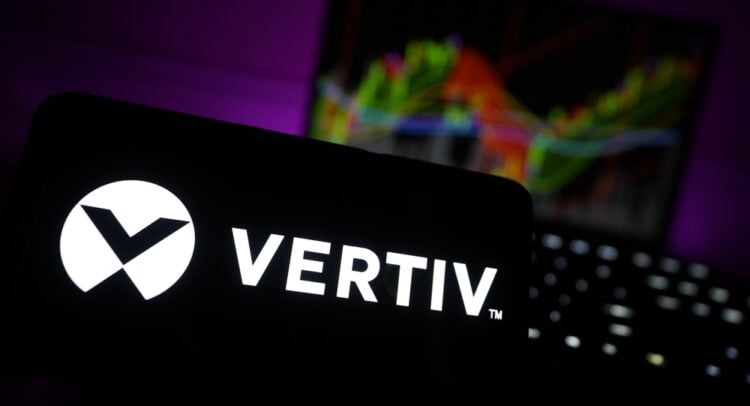The shares of Vertiv (VRT), which offers power, cooling, and IT infrastructure solutions, were in high spirits on Monday afternoon. This came after the Ohio-based company said it has achieved significant progress in its design plan for the construction of 800-volt direct current (VDC) to power Nvidia’s (NVDA) massive AI data center infrastructure.
Elevate Your Investing Strategy:
- Take advantage of TipRanks Premium at 50% off! Unlock powerful investing tools, advanced data, and expert analyst insights to help you invest with confidence.
VDC is the voltage in a direct current system that flows in one direction and powers electronic devices such as batteries and solar panels. As such, 800 VDC is a massive megawatt-scale power output designed for industrial use.
Vertiv and Nvidia Target Massive Power Architecture
In May, chip designer Nvidia tapped Vertiv, among other companies, to support data center power systems for its AI workloads. The goal is transition to 800 VDC infrastructure to beat the limit of traditional servers that are limited to processing up to about 54,000 watts of power — a size common in older data centers.
On Monday, Vertiv disclosed it has moved the design for the system from conception to engineering readiness. This is even as the infrastructure company is putting finishing touches to components of the integrated system that will provide power conversion, distribution, regulation, and storage — all in one set up.
Nvidia Plans for Future Compute Power
Meanwhile, the actual completion of the power systems for release is not expected until the latter half of 2026. The timeline has been targeted to precede the planned rollout in 2027 of Nvidia’s next-generation computing technology, the Rubin Ultra platforms.
“With the development of our Vertiv 800 VDC platform designs, we’re translating our extensive experience into next-generation solutions that will support the massive compute densities required for AI factories,” said Scott Armul, an executive vice president at Vertiv.
Vertiv brings its decades of experience in handling power architectures for industrial use in industries such as telecommunications to the deal with Nvidia.
Is Vertiv Stock a Good Buy?
The latest update comes as analysts on Wall Street continue to have high optimism in Vertiv despite tech giants such as Microsoft (MSFT) and Amazon (AMZN) recently making progress with their data center cooling technologies — a market considered as one of Vertiv’s core areas of business operation.
Across the Street, VRT stock currently holds a Strong Buy consensus rating, as seen on TipRanks. This is based on 16 Buys, two Holds, and one Sell assigned by 19 analysts over the past three months. However, the average VRT price target of $160.89 suggests an 11% downside risk.


















